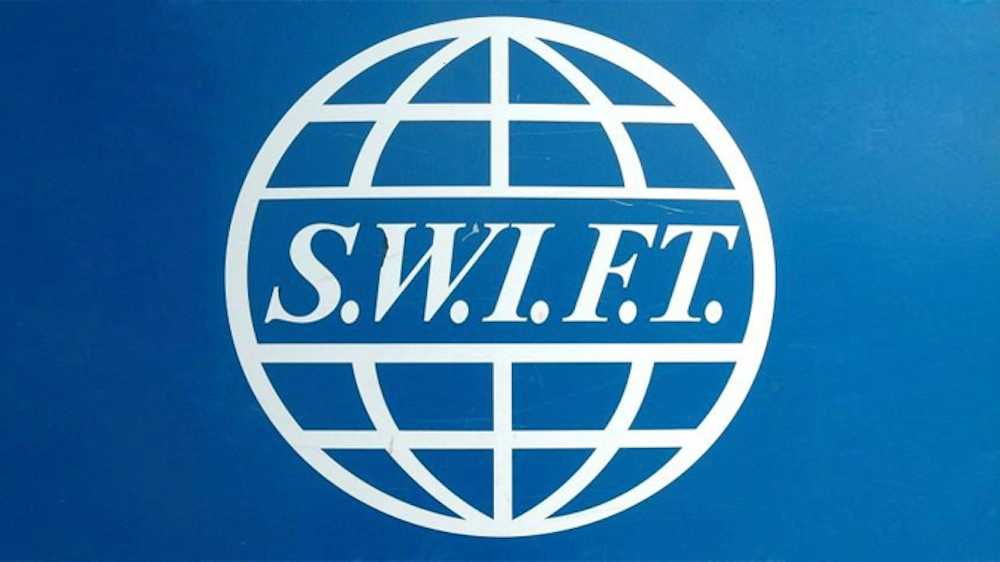Chainlink integrates Swift messaging to streamline tokenized fund workflows with UBS
Quick Take Chainlink and Swift have expanded their collaboration with a live UBS Tokenize pilot, triggering onchain fund subscription and redemption workflows through existing systems. The news follows Chainlink’s AI pilot on corporate actions — routine events in finance such as dividend payouts or merger updates — using the same core infrastructure.

Chainlink and Swift have expanded their collaboration with a new system allowing financial institutions to manage tokenized fund processes directly through their existing systems using Swift messaging and the Chainlink Runtime Environment.
"This shows how institutions can access blockchains without needing to upgrade to new infrastructure, replace their existing processes, or integrate new identity and key management solutions," Chainlink said in a statement . The first use case involved a technical and operational pilot with UBS Tokenize, the in-house tokenization unit of UBS, extending prior work with the Monetary Authority of Singapore's Project Guardian initiative.
The solution utilizes Chainlink's CRE, alongside the Swift financial messaging network, to trigger subscription and redemption workflows for tokenized funds, without requiring institutions to replace their legacy systems or build new identity and key management layers. CRE receives ISO 20022-compliant Swift messages, which in turn activate smart contract events in the Chainlink Digital Transfer Agent (DTA) technical standard, the project explained.
"I'm very excited about this landmark innovation we've achieved by leveraging Swift's standards and UBS' tokenized asset design, as we are showing how the use of smart contracts and new technical standards can enable transfer agents and other entities to manage tokenized asset workflows onchain," Chainlink co-founder Sergey Nazarov said. "UBS is demonstrating how the use of smart contract-based technologies can be used by financial institutions to more readily explore new types of product lifecycle composability."
Chainlink — a decentralized oracle network that connects blockchains with real-world data, APIs, and payment systems — is positioning the integration as a "plug-and-play" unlock for the $100 trillion-plus global fund industry. Swift, whose financial messaging services are used by more than 11,000 institutions across more than 200 countries, provides the infrastructure backbone already trusted for trillions of dollars in cross-border payments.
Chainlink's AI pilot and Swift's cross-border blockchain plans
The news closely follows Chainlink's announcement on Monday that it had completed the second phase of a blockchain and AI-driven pilot for corporate actions processing — a costly pain point across the global financial industry — also using CRE and Swift messaging. That initiative coordinated multiple large language models — including OpenAI's GPT, Google's Gemini, and Anthropic's Claude — to generate structured, ISO 20022-compliant records transmitted through Swift's network. The effort was backed by major players, including DTCC, Euroclear, and banks such as UBS, DBS, and BNP Paribas.
The announcements reflect a coordinated rollout highlighting multiple applications of the same core infrastructure, underscoring how Chainlink and Swift aim to make blockchain-based workflows accessible to traditional institutions at scale.
Meanwhile, Swift is also pursuing its own blockchain-based shared ledger for cross-border payments in collaboration with Consensys, the software development firm behind MetaMask and Ethereum Layer 2 Linea. More than 30 global banks, including Bank of America, HSBC, and BNP Paribas, are involved in testing. Swift describes the project as a step toward interoperable, onchain financial infrastructure while maintaining regulatory and compliance standards.
Disclaimer: The content of this article solely reflects the author's opinion and does not represent the platform in any capacity. This article is not intended to serve as a reference for making investment decisions.
You may also like
Arthur Hayes’ New Article: BTC May Drop to 80,000 Before Kicking Off a New Round of “Money Printing” Rally
The bulls are right; over time, the money printer will inevitably go “brrrr.”

Mars Morning News | Federal Reserve officials divided on December rate cut, at least three dissenting votes, Bitcoin's expected decline may extend to $80,000
Bitcoin and Ethereum prices have experienced significant declines, with disagreements over Federal Reserve interest rate policies increasing market uncertainty. The mainstream crypto treasury company mNAV fell below 1, and traders are showing strong bearish sentiment. Vitalik criticized FTX for violating Ethereum’s decentralization principles. The supply of PYUSD has surged, with PayPal continuing to strengthen its presence in the stablecoin market. Summary generated by Mars AI. This summary was produced by the Mars AI model, and the accuracy and completeness of its content are still being iteratively updated.

"Sell-off" countdown: 61,000 BTC about to be dumped—why is it much scarier than "Mt. Gox"?
The UK government plans to sell 61,000 seized bitcoins to fill its fiscal gap, which will result in long-term selling pressure on the market.

A $500,000 lesson: He made the right prediction but ended up in debt
The article discusses a trading incident on the prediction market Polymarket following the end of the U.S. government shutdown. Star trader YagsiTtocS lost $500,000 by ignoring market rules, while ordinary trader sargallot earned more than $100,000 by carefully reading the rules. The event highlights the importance of understanding market regulations. Summary generated by Mars AI. This summary was generated by the Mars AI model, and its accuracy and completeness are still being iteratively improved.

